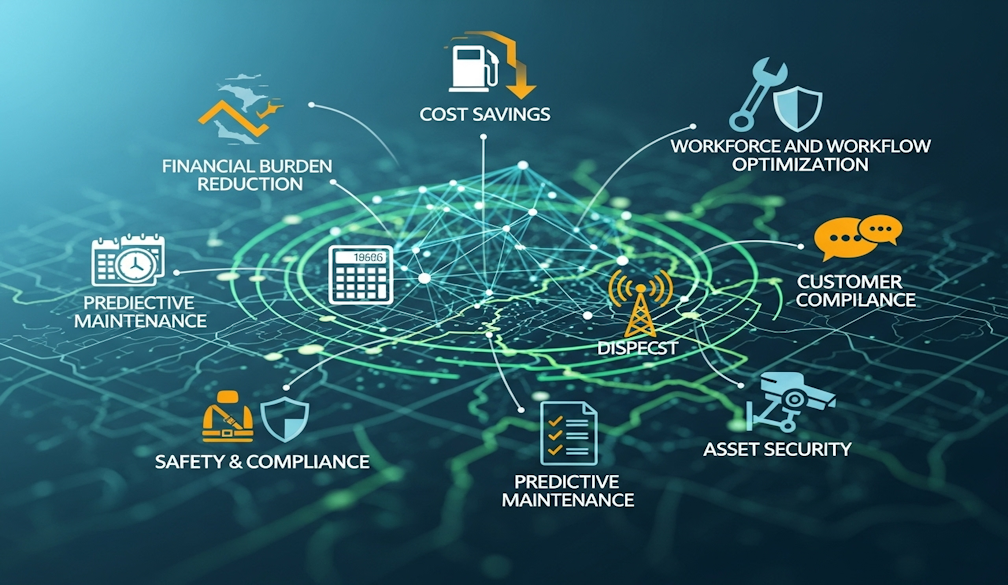Designing Secure Content APIs in Headless CMS Environments

APIs are what enable content to be delivered from a headless CMS to anywhere digital content can exist from websites and apps to IoT and more. Yet while the headless approach offers incredible scalability and flexibility, it can also increase vulnerabilities. Companies must consider security as part of any API development so they don't alienate customers or put private information at risk. This article highlights key design considerations for security in a headless CMS's content API.
Security Problems with Headless CMS Architecture
A headless CMS means a content management system where the backend is separated from the frontend and content is pushed through the use of various APIs. While separating CMS components and allowing for the application of content across multiple digital experiences is a powerful tool, this technique inherently expands the overall attack surface. Having multiple APIs means having multiple entry points for hackers trying to infiltrate a system to access sensitive data. The more content that companies try to make accessible and found across various channels, the more likely it is to have points of attack, meaning more charges must be taken to mitigate such vulnerabilities.
Authentication as a First Requirement for API Security
API Security begins with authentication to ensure that only verified users or systems have access to content APIs. Subsequently, strong authentication should be established through OAuth 2.0, JSON Web Tokens (JWT), or via API keys. Organizations exploring Sanity alternatives should also carefully evaluate these authentication options to ensure their CMS provides robust security. OAuth allows third-party systems to access content without giving away user credentials. In contrast, JWT is stateful and provides a secure means of access without a storage requirement. Thus, protocol selection and proper configuration prevents unauthorized personnel from entering.
Authorization Ensures That Even When Minimized Access is Given, It's Safe
In addition to authentication, if systems grant access, the best and safest way is by ensuring access is maintained on a need-to-know basis. Strong authorization is implemented so only minimal data necessary is accessed for a given task. Role-based access control (RBAC) and attribute-based access control (ABAC) ensure that an organization can define granular rules from role assignments down to specific attributes for users. The less access personnel have in addition to those areas being inaccessible the less chance there is for an internal data breach or an exposure incident to sensitive areas that further supports API security.
Avoid Sensitive Data Exposure by Encryption for Data Transfer
Sensitive data exposed during transfer between APIs and client applications should be encrypted to avoid interception and attack. HTTPS with Transport Layer Security (TLS) protects the transfer and ensures transaction integrity. Encryption helps avoid man-in-the-middle breaches and unauthorized access to maintain user rights and privacy and enterprise efforts toward compliance with regulatory initiatives.
Avoid Attacking Content APIs by Expecting Them
While content APIs may be available, and this foundation is accessible via the Internet, it leaves content APIs vulnerable. Many attacks occur on APIs: SQL injection, cross-site scripting (XSS), and distributed denial-of-service (DDoS). Security must be provided for the API from an assessment of potential attacks at the design level, in addition to expected security provided through network firewalls, filtering bad traffic, and mitigation efforts to avoid service disruption.
Add an Extra Layer of Security with an API Gateway
API gateways are a method employed to add an extra layer of security for APIs and associated content. An API gateway is a security layer between front-end clients and back-end services, creating a central control platform for input and outputs, streamlining authentication and authorization efforts, and enabling monitoring. For example, an API management gateway can utilize a security filter allowing for IP whitelisting/blacklisting and intrusion detection to validate requests before they go through to avoid malicious action. A centralized approach minimizes vulnerability through multiple channels, reduces security efforts to the big picture instead of a thousand little ones, and offers visibility elements that reveal suspicious traffic patterns.
API Logging and Monitoring
Logging and monitoring are crucial for API accountability, potential abuse detection, and post-breach forensic assistance. Proper logging includes as much critical information as possible, including user logins, login and usage patterns, and more. Monitoring assists with compliance and helps the company understand the nature of its security breaches in the first place; if a company has a vulnerable API, it can breach itself quickly and extensively. The sooner a company knows about it and has the logs available to show what was done inappropriately, the better.
Continuous API Security Efforts
Ongoing security is necessary for vulnerable headless CMS applications. Vulnerability scans, pen tests, and other security audits are necessary to find weaknesses in the created API, and adjustments must be made, even in the live version, if weaknesses are found during development. Continuous security includes static and dynamic scans of code or penetration testing so that any findings can be remediated right away to prevent breach. Vulnerability scans can be both automated and manual, but need to be done regularly to find vulnerabilities before hackers do.
Secure Handling of API Versioning
API versioning is essential to ensure that as a company's APIs get better, companies don't break current customer integrations. Secure development includes security API versioning. Security API versioning should be used, as it's built into software construction, and proper APIs should have the versioning constructs to allow for progressive change communication over time. Companies must implement backward compatibility to negate deprecation exploits to avoid vulnerabilities of APIs that are outdated but still available. Versioning needs to be communicated and deprecated slowly so APIs can adjust without putting themselves at risk.
Teaching Development Teams About Security Needs
API security requires a well-trained team. Training and education regarding API security best practices, threat mitigation, and secure coding efforts should be prioritized. When development teams get a feel for the essential nature of security, they're aware of vulnerabilities should they occur, coding methods a little more securely, and how to avoid problems before they arise. This keen awareness minimizes the potential for any attacks to occur due to human error or error in understanding.
Mandatory Compliance Over Time Security Needs
Sensitive companies need to operate under a number of data security compliance efforts like General Data Protection Regulation (GDPR), California Consumer Privacy Act (CCPA), and much more. Therefore, API security is needed intentionally during development. For example, development consideration for compliance needs over time ensures that your content API will be compliant with goals. For example, real consent is needed for user data. Therefore, development efforts that provide ways to track explicit consent, stored memory lock box options, and privacy policy development prove strong compliance to avoid legal and financial impacts while protecting user trust.
Incident Response and Recovery Preparedness
Even the safest APIs will fall victim to security breaches in time. Therefore, incident response should be part of the process from the beginning. Should an organization know how to effectively respond to an API security breach, recovery plans with specific access help deconstruct an incident before it can get out of control. Recovery is just as important as detection and prevention. An effective communication plan, for example, can help users understand that an incident happened, what was done to fix the situation, and how it won't happen again. Preparedness can enhance accompanying resiliency while managing API security effectively over time.
API Scalability Without Security Compromises
Content APIs should be scalable and once again, scalability requirements should not compromise security. APIs should be built with scalable opportunities in mind, from using architectural patterns that can accommodate security and scaling effectively to maintenance of a consistent security baseline from hosting in secure clouds to encryption during API building and use to load balancing and monitoring applications that keep digital activity on track for seamless scalability integrations down the line as systems expand and populations shift.
Secure Coding Standards and Practices
Security begins with the code that creates content APIs. Secure coding standards and secure coding practices train developers on how to avoid security weaknesses, everything from injection attacks to insecure direct object references to insecure deserialization. Developers can rely on the OWASP Top Ten Framework for testing, static code analysis resources, and peer code reviews to significantly reduce vulnerabilities.
Access and Permission Levels Should Be Granular
APIs with appropriate access levels ensure that people and systems receive only those resources they need and nothing more. Thus, permission levels should be as granular as possible so that unauthorized or unintended access to sensitive content does not happen. Granular access levels ensure that confidential content is not exposed to the public or anyone without the appropriate credentialing and minimizes the risk of compromised credentials, hacker exploitation, and other vulnerabilities that can jeopardize the CMS environment.
Monitoring and Responding to Real-Time Threats
API security is enhanced tremendously by real-time threat detection in a proactive manner. Tools like security information and event management (SIEM), real-time anomaly detection, and on-call notification bolster security teams' ability to assess and respond to incidents rapidly. When the proper tools exist to monitor activity regularly, for example, security teams are better able to identify suspicious behavior or attacks and mitigate them before they disrupt API functionality. Instead, effective real-time threat detection helps keep APIs operational and data safe, meaning companies maintain their reputations and their clients' trust.
Conclusion
The importance of secure content APIs within headless CMS systems relates directly to the ability to protect sensitive information and foster organizational trust with users, consumers, and partners. As more companies grow more digital and as access expands online, content APIs help provide information to digital systems websites, mobile apps, voice integrations, IoT, and more emergent digital landscapes. Thus, it's vital that content APIs are not only constructed correctly but secure so that they do not leave companies vulnerable to internal and external threats that can lead to data breaches, loss, exposure, unwanted access, and even cybersecurity threats.
Companies that feel safe with their digital infrastructure because they employ the necessary security best practices of proven authentication, substantial authorization, general encryption, vulnerability, and threat detection can rely upon their security to support their practical day-to-day operational needs. For example, secure authentication through Basic Authentication and API Keys allows companies to discern that only authenticated users will ever have access to sensitive content. In addition, numerous encryption practices ensure that sensitive data in-flight cannot be intercepted or altered by third party security practices like HTTPS and Transport Layer Security (TLS).
Yet even security measures are not enough without ongoing testing and threat assessments to acknowledge vulnerabilities before they become visible issues. This can include penetration testing, vulnerability scans, and security audits. Coupled with threat analysis and subsequent monitoring with in-depth analytics in real-time, organizations can go beyond tenets of initial security and test for holes that expose them to danger. If an organization discovers the potential for a breach immediately, for example, it can reduce exposure by shutting down access until a fix is found.
Such tenets can be applied forever to protect APIs even as operations scale. Thus, organizations can feel at ease that as the demand for digital operational needs increases in users, the backend will not slow down and instead will provide consistently stable API performance beyond fears of security versus user experience. Instead, the security allows for quality content delivery and trust fosters organizational reputation.
Ultimately, organizations that take the time, energy, and resources to continuously secure their teams' API design for content will gain the competitive edge. When access histories are digital-first and the entire global marketplace is digitally transformed, it's essential to have proven worth within the security of sensitive assets since an organization's reputation is at stake. Those who thrive online do so because they understand their marketplace needs and exist in good faith with their data acquisition practices. Therefore, solidifying strong security for APIs aligns naturally with organizational goals for digital success and physical transformation.
























